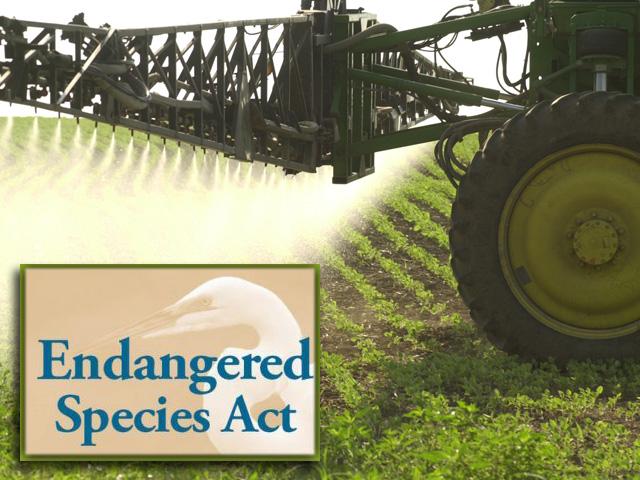EPA: Sulfoxaflor Affects 4% of Species
Agency Says Sulfoxaflor Registrants' Proposed Labels Protect More Species
LINCOLN, Neb. (DTN) -- EPA completed its final biological evaluation of the insecticide sulfoxaflor on Thursday, finding the chemical will cause no effect to 47% of listed species and 54% of critical habitats.
Sulfoxaflor is used to control piercing and sucking insects such as the sugarcane aphid in sorghum and the tarnished plant bug in cotton.
In a July 12, 2019, announcement, EPA said it had enough data to show Corteva Agriscience's sulfoxaflor is safe for humans and bees and had granted unconditional registration for new uses of sulfoxaflor on the Transform WG and Closer SC labels. Those new uses were alfalfa, corn, cacao, grains (millet, oats), pineapple, sorghum, teff, teosinte and tree plantations. The agency also added back cotton, soybeans, citrus, cucurbits and strawberry.
EPA said in its final biological evaluation the chemical is likely to adversely affect but will not cause jeopardy to 27% of listed species or "adversely modify" 6% of critical habitats. In addition, the agency said sulfoxaflor is likely to adversely affect and cause jeopardy to 4% of listed species and "adversely modify" 3% of critical habitats.
EPA said the determination means the agency "reasonably expects" at least one individual animal or plant may be exposed to sulfoxaflor at a "sufficient level" to have an adverse effect.
"This is the case even if a listed species is almost recovered to a point where it may no longer need to be listed," EPA said in a news release.
"The likely 'take' which includes unintentional harm or death, of even one individual of a species, is enough to trigger such a determination. An LAA determination, however, does not necessarily mean that a pesticide is putting a species in jeopardy."
In the final evaluation, EPA said it evaluated the chemical's effects on more than 1,700 listed species and more than 800 designated critical habitats.
P[L1] D[0x0] M[300x250] OOP[F] ADUNIT[] T[]
"Since EPA determined that sulfoxaflor is likely to adversely affect certain listed species and/or critical habitats, the agency has initiated formal consultation with the U.S. Fish and Wildlife Service and National Marine Fisheries Service," EPA said in a news release.
"EPA will also continue discussions with the registrant to determine what additional mitigation measures could be implemented to further protect listed species and critical habitats while the consultation is ongoing."
The company registrants of sulfoxaflor have submitted revised proposed labels to EPA. The agency said those labels would "decrease exposure (e.g., reducing aerial application rates for certain use patterns, prohibiting aerial application for certain uses) which resulted in a reduction of the 'likely to adversely affect' determinations."
In December 2022, the U.S. Court of Appeals for the Ninth Circuit in San Francisco gave EPA six months to make an Endangered Species Act determination on sulfoxaflor.
The Ninth Circuit ruled the agency did not meet those obligations when it amended the chemical's registration in 2019.
The court ruled against a request by environmental groups to vacate the 2019 decision altogether.
In the ruling handed down on Dec. 21, 2022, the Ninth Circuit said vacating the registration would hurt agriculture.
The court found EPA ignored a previous court order in 2016 by reinstating sulfoxaflor's registration without completing an ESA review.
Back in December, the court said the 2019 unconditional registration of sulfoxaflor was "a surprise" considering the court's previous ruling.
In 2010, then Dow Chemical (now Corteva Agriscience) applied for registration of sulfoxaflor.
In 2013, EPA announced and invited public comment for a proposed conditional registration at lower application rates with some mitigating measures. Fewer than seven months later, EPA decided to unconditionally register sulfoxaflor.
The agency was ordered by Ninth Circuit in 2015 to vacate the sulfoxaflor registration because of a lack of data on its effects on bees.
In 2016, EPA registered sulfoxaflor for limited use without conducting the additional studies as ordered by the court.
Read more on DTN:
"EPA Finds Insecticide Sulfoxaflor Likely to Adversely Affect Certain Species," https://www.dtnpf.com/…
Todd Neeley can be reached at todd.neeley@dtn.com
Follow him on Twitter @DTNeeley
(c) Copyright 2023 DTN, LLC. All rights reserved.






